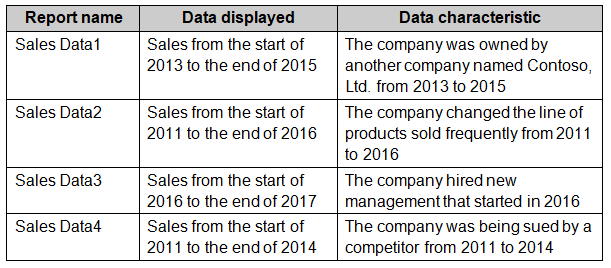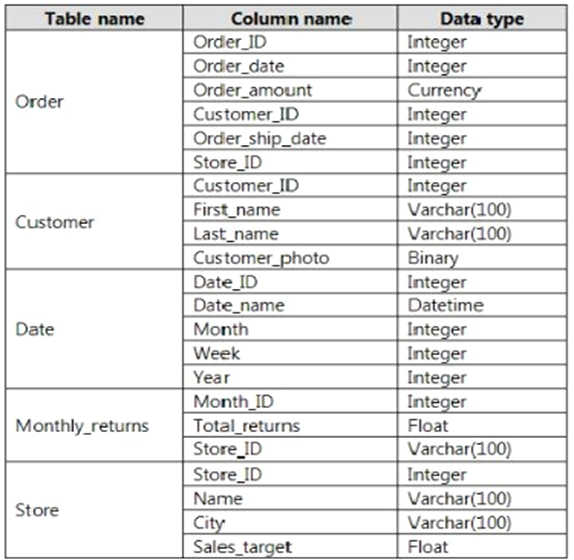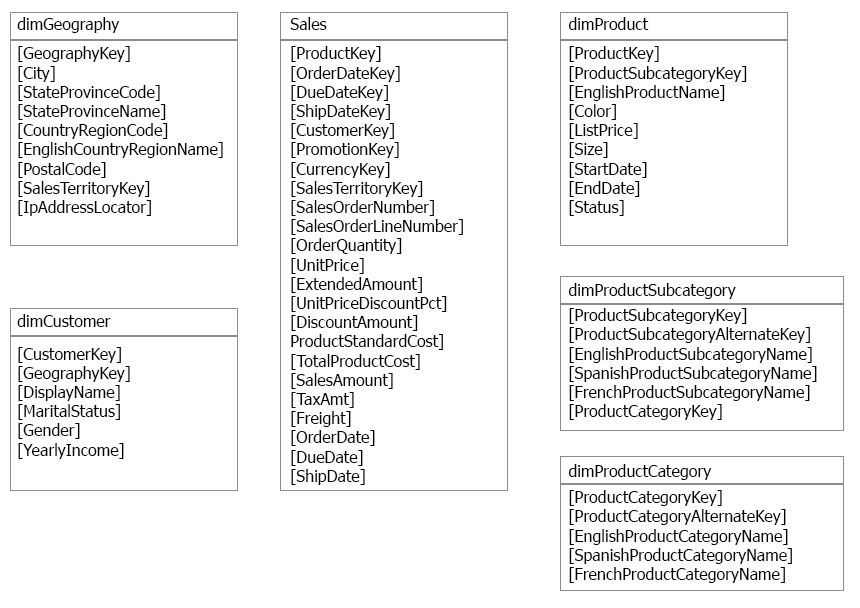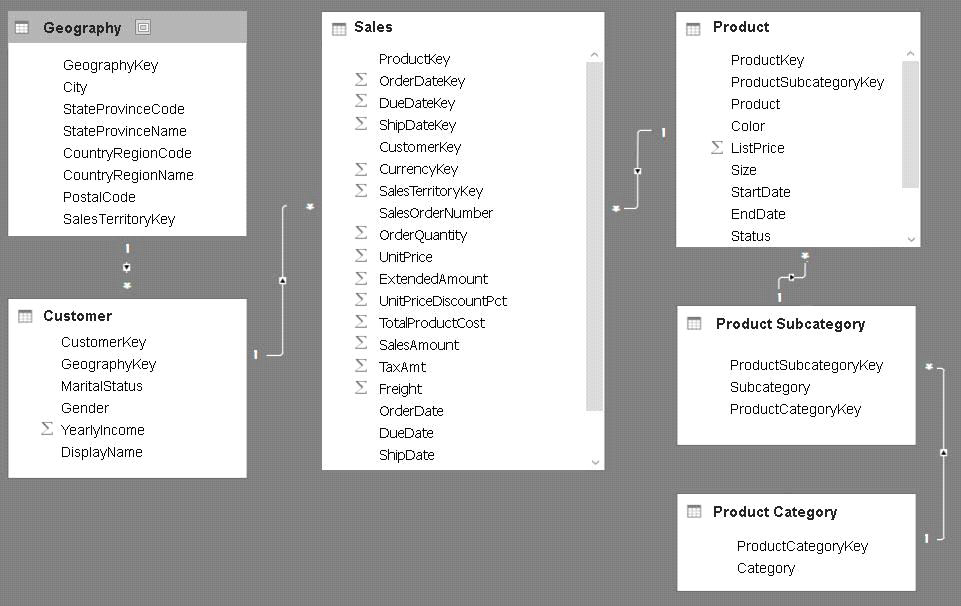Microsoft 70-778 Analyzing and Visualizing Data with Microsoft Power BI Exam Practice Test
You plan to create a dashboard in the Power BI service that will retrieve data from a tabular database in Microsoft SQL Server Analysis Services (SSAS). The dashboard will be shared between the users in your organization.
The Analysis Services database has a DirectQuery connection to the SQL Server database that contains the source data.
You need to ensure that the users will see the current data when they view the dashboard.
How should you configure the connection to the data source?
Answer : D
You have an app workspace that contains a dashboard and four reports. All the reports are generated from a single dataset that contains sales data for your company.
The reports display the data configured as shown in the following table.

You need to ensure that the users of the reports can locate the correct report by using natural language queries.
What should you do?
You are creating a Power BI Desktop report that has several bar charts and a date slicer.
You need to create a slide show that can be viewed from the Power BI service. Each slide must display the charts filtered for a different year.
What should you do before you publish the report?
Note: This question is part of a series of questions that use the same scenario. For your convenience, the scenario is repeated in each question. Each question presents a different goal and answer choices, but the text of the scenario is the same in each question in this series.
You have a Microsoft SQL Server database that contains the following tables.

The following columns contain date information:
- Date[Month] in the mmyyyy format
- Date[Date_ID] in the ddmmyyyy format
- Date[Date_name] in the mm/dd/yyyy format
- Monthly_returns[Month_ID] in the mmyyyy format
The Order table contains more than one million rows.
The Store table has a relationship to the Monthly_returns table on the Store_ID column. This is the only relationship between the tables.
You plan to use Power BI Desktop to create an analytics solution for the data.
You need to create a relationship between the Order table and the Store table on the Store_ID column.
What should you do before you create the relationship?
Answer : C
Note: This question is part of a series of questions that use the same scenario. For your convenience, the scenario is repeated in each question. Each question presents a different goal and answer choices, but the text of the scenario is exactly the same in each question in this series.
Start of repeated scenario.
You have a Microsoft SQL Server database that has the tables shown in the Database Diagram exhibit. (Click the Exhibit button.)

You plan to develop a Power BI model as shown in the Power BI Model exhibit. (Click the Exhibit button.)

You plan to use Power BI to import data from 2013 to 2015.
Product Subcategory[Subcategory] contains NULL values.
End of Repeated Scenario.
You implement the Power BI model.
You plan to add a table named Date to the model. The table will have columns for the date, year, month, and end of the last month, and will include data from January 1, 2013 to December 31, 2015.
The Date table and the Sales table will have a relationship.
Which DAX functions should you use to create the columns?
Note: This question is a part of a series of questions that present the same scenario. Each question in the series contains a unique solution that might meet the stated goals. Some question sets might have more than one correct solution, while others might not have a correct solution.
After you answer a question in this section, you will NOT be able to return to it. As a result, these questions will not appear in the review screen.
You have a Power BI model that contains two tables named Sales and Date. Sales contains four columns named TotalCost, DueDate, ShipDate, and OrderDate. Date contains two columns named Date and Time.
The tables have the following relationships:
Sales [DueDate] and Date [Date]
Sales [ShipDate] and Date [Date]
Sales [OrderDate] and Date [Date]
The active relationship is on Sales [DueDate].
You need to create measures to count the number of orders by [ShipDate] and orders by [OrderDate]. You must meet the goal without loading any additional data.
Solution: You create a calculated table. You create a measure that uses the new table.
Does this meet the goal?
Answer : B
You have an on-premises Power BI Report Server.
You plan to create a report in Power BI Desktop and publish the report to the report server.
Which data source should the report use?